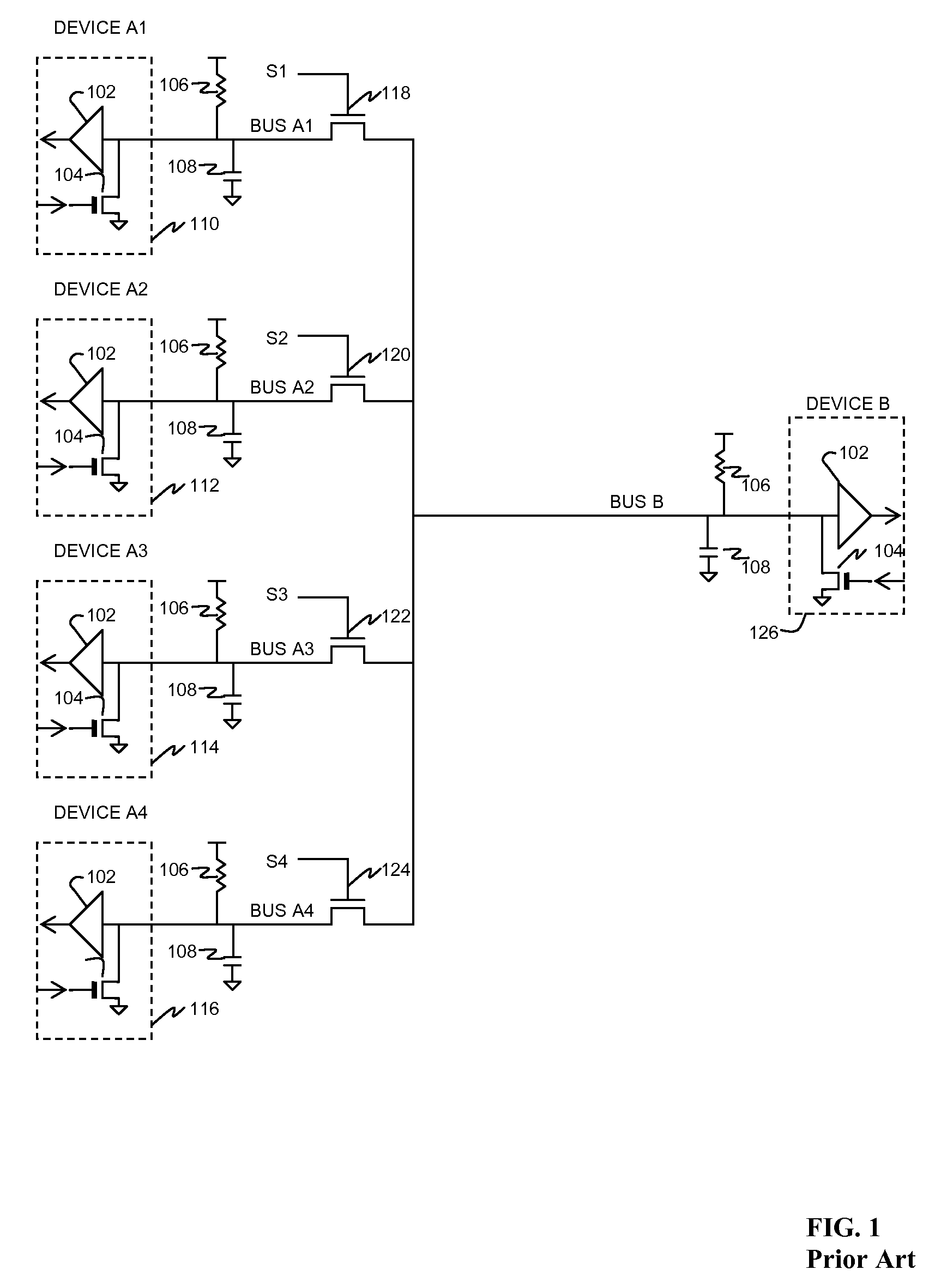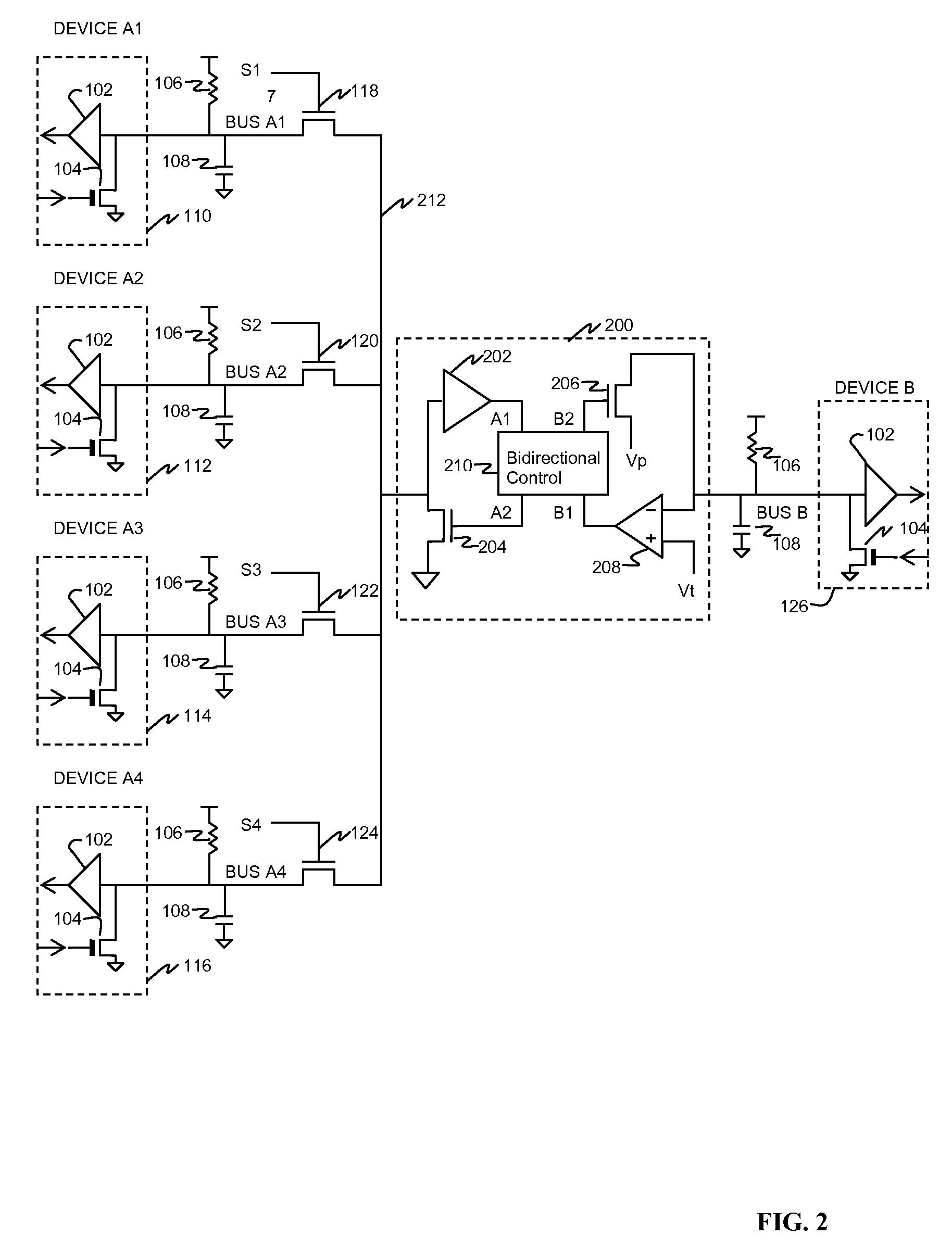Bidirectional data repeater switch
a repeater switch and data bus technology, applied in the direction of logic circuit coupling/interface arrangement, pulse technique, frequency-division multiplex, etc., can solve the problems of slowing down the transition, high voltage on the bus, and increasing the cumulative parasitic capacitance on the bus
- Summary
- Abstract
- Description
- Claims
- Application Information
AI Technical Summary
Benefits of technology
Problems solved by technology
Method used
Image
Examples
Embodiment Construction
[0023]In FIG. 1 (prior art), a plurality of devices A1, A2, . . . , An, shown as devices 110, 112, 114, 116, couple data to and from respective buses A1, A2, . . . , An to a common bus B and hence to device 126. In each device a comparator 102, with threshold set at an appropriate level typically midway between logic “high” and logic “low” voltages, has its input coupled to the respective A bus. An active pulldown 104 has its gate coupled to the data input of the device, and causes the bus to be pulled to a low voltage (typically ground) when the input transmit data line is high (while not shown, typically an inverter is placed in the line driving the gate of each active pulldown to compensate for the data inversion which otherwise takes place). The on resistance of active pulldown 104 is typically much lower than the passive pullup 106 so as to provide as low a logic “low” voltage as practical. Passive pullup 106 applies a logic “high” voltage to the bus when active pulldown 104 is...
PUM
 Login to View More
Login to View More Abstract
Description
Claims
Application Information
 Login to View More
Login to View More - R&D
- Intellectual Property
- Life Sciences
- Materials
- Tech Scout
- Unparalleled Data Quality
- Higher Quality Content
- 60% Fewer Hallucinations
Browse by: Latest US Patents, China's latest patents, Technical Efficacy Thesaurus, Application Domain, Technology Topic, Popular Technical Reports.
© 2025 PatSnap. All rights reserved.Legal|Privacy policy|Modern Slavery Act Transparency Statement|Sitemap|About US| Contact US: help@patsnap.com



